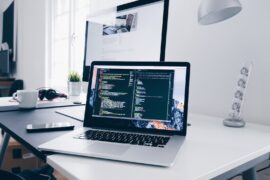
One of my favorite things to do in the morning is bake the plastic off the CPU cores in the ol’ computer and there’s nothing like a little rendering action to make that happen. As I write this, my CPU is maxed out at 100% while KeyShot 2.1 creates some of the renderings you’ll see below.
KeyShot 2.0 (covered here) brought a new look and new features to the new KeyShot render engine ruckus that started up earlier this year. Now, as of today, KeyShot 2.1 is out and while minor releases don’t usually have a huge amount of significant upgrades, KeyShot 2.1 shows Luxion is on a night-and-day development binge that’s just not stopping… hook. me. up.
More materials, more improvements
KeyShot has taken the bits put into 2.0 and improved on them in 2.1. Particularly important for those who can’t wait for a rendering to complete is the two new rendering modes – Realtime rendering mode and background rendering mode. Both greatly speed up the process of creating renderings, while not impacting the quality you would expect. Here’s a rundown of many of the updates you’ll see.
- A full undo stack
- “Use Realtime render” for faster rendering that matches the realtime windows
- “Render in Background” mode allowing you to work in KeyShot during a final render
- New translucent material for plastics and organic materials
- New specialized materials Gem, Liquid, Glass, and Paint
- Significantly improved anisotropic material (plans to make it more controllable via textures)
- Labels can be specular
- Support for extra rendering effects on the GPU (if a GPU is present)
- Support for ALIAS Wire and Solid Edge
- Localization (so far, 80% German is ready. French, Japanese and others to follow shortly)
Note: the GPU implementation is cross-platform. It does not require CUDA and it therefore works on machines with pretty much any type of graphics card.
Some random renderings
All of these renders are very fast, VERY crude drop in a scene and slap on some materials. I made some minor adjustments to lighting and environment settings, but there’s nothing custom here. All of these use the preset materials, environments and textures.



The KeyShot workflow
You’ll find the workflow fairly straight forward in KeyShot. There are not any new changes in 2.1 so much, but I wanted to give you a little step-by-step action. The total time it took me to mess around rendering this Portal Turret model from Scott Bruins (via GrabCAD) was about 30 minutes, with another 30 minutes on the rendering.





Here’s another step-by-step. This is the rather famous Explorer SolidWorks model. I’ve never quite liked the colors used on it in other renderings I’ve seen, so here are the colors I prefer, starting out with all the model color being brought in when opened. This model took a while to open in KeyShot, but once it was open, moving around in the scene was a breeze.




The background rendering is indeed awesome. Even though my 2GB computer is topped out on CPU power and leaving me unable to do anything too intensive, I am still able to import new models,set up the next render view, adjust materials and change lighting while the previous scene is being rendered.
What could make KeyShot even better
There’s no doubt, KeyShot creates some great renderings and the set-up is quick. The learning curve is nearly zero. What would make KeyShot even better though is the ability to render only part of a scene. Sure, you can cancel once you’re into the rendering a little bit, but maybe you want to work on one specific part of the model or isolate a certain area of the environment.
Another improvement would be an option to add materials, environments and textures via the Library interface. Currently you have to drop them into the folder and then (after you figure it out) right-click in the Library window and select “Rescan library directory”. Having an option to add, browse or even add from a online KeyShot user gallery would be extremely helpful.
One more, the ability to Pause a rendering. Maybe you start one and want to finish another before the previous rendering finishes. Currently there is no way to pause a rendering. You can cancel it if you do not use “Render in Background” option and you can only exit the render window completely if you do use the “Render in Background” option.
Translucent Materials
I wasn’t able to show this, but you’ve got to check out the translucence improvements in Keyshot 2.1. It can of course be adjusted just as easy as any other material.



